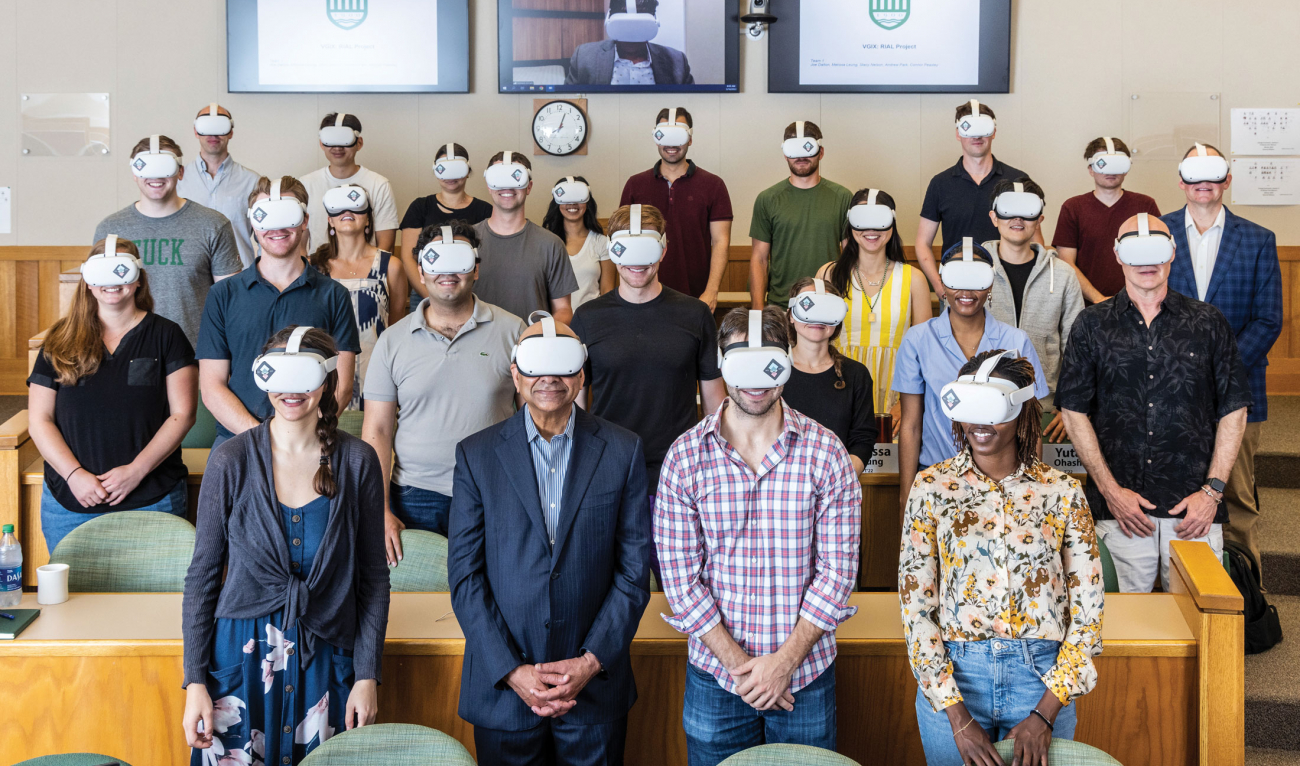Innovation in 3-D
As soon as I retire, I have another career in Hollywood,” says management prof Vijay Govindarajan. He’s joking about a monumental task he undertook last year: producing a series of 20-minute virtual reality (VR) films to transport his business students to India without having to leave the classroom.
M.B.A. students are typically required to study abroad on “Global Insight Expeditions,” known as GIX courses. In 2022, Govindarajan had hoped to lead a GIX in India, his native country, to teach “reverse innovation”—the process of inventing inexpensive products for poor consumers that can eventually sell in wealthier markets. Covid-19 jettisoned those plans.
With approval from Tuck dean Matthew Slaughter, Govindarajan hired an Indian production company to produce 28 VR films capturing the lives of 16 families across the south Indian state of Tamil Nadu. It was cheaper than transporting students from Hanover to Tamil Nadu. Govindarajan wrote the scripts and collaborated with the producers remotely to make sure the films contained scenes and settings relevant to his course, billed as a “Reverse Innovation Virtual Insight Expedition,” or Reverse Innovation VGIX. The objective for his 30 students: Identify health and wellness struggles these families face and use that knowledge to create products they would want to buy.
“I don’t believe the poor should be just taken care of by the government,” Govindarajan says. “It is a challenge for business to innovate for the poor. And if you can innovate for the poor, those solutions are also useful for the rich.” He once helped develop a portable electrocardiogram machine for GE that cost $100 and was targeted to rural Indians. It’s now sold across the world, including in the United States.
Wearing VR headsets, Govindarajan’s students walked through the lives of various people who live on $2 a day in south India. In one instance, they visited a beach and watched a fisherman at work, perused the village market where his family shopped, and went inside his home. The students then conducted 90-minute Zoom interviews with each family.
“Business school courses rarely allow students to experience what I would call the human side of business,” says Sasha Croak, Tu’22. “It was invaluable and made me realize that whenever you’re crafting a solution, it has to be based on a specific consumer insight and pain point. The families shared some incredibly personal information with us.”
“VR is like a diamond embedded into the gold of the curriculum.”
The students, who divided into teams, learned the families wanted to consume foods rich in protein and vitamins but couldn’t afford them. One team zeroed in on the popularity of goods in small sachets at the village market and proposed creating cheap packets of seasonings or powdered drinks enriched with vitamins and protein. At the end of the course, each team pitched their ideas to a group of venture capitalists based in India.
Govindarajan, renowned for his expertise in entrepreneurial innovation, has taught M.B.A. students for 40 years and written two bestselling books on the subject. Now he can claim status as a pioneer in pedagogical innovation as well. “It is about reimagining the learning experience first, and it’s very hard,” Govindarajan says of designing a VR-based course. “I typically design a course by writing some cases and teaching them. This is completely different. I didn’t have any playbook.”
Though he acknowledges there are many business school experiences VR can’t and shouldn’t replace, Govindarajan is bullish on the technology. The 3-D, 360-degree perspective offers viewers more freedom to explore and observe than any other mode. Two-dimensional films don’t allow users to choose what they’re looking at, and looking in person can create etiquette constraints. For example, it might be rude or uncomfortable to spend several minutes scrutinizing someone’s dinner plate during an actual visit, but in VR, users can look at the plate as long as they wish. Interacting in person can also change the environment, Govindarajan notes, citing how prices inflate when a white foreigner walks into an Indian marketplace.
“VR is like a diamond embedded into the gold of the curriculum,” says Govindarajan. “It complements. It strengthens.” He taught the course again this spring, and Tuck is actively exploring options for bringing VR into other classrooms.











